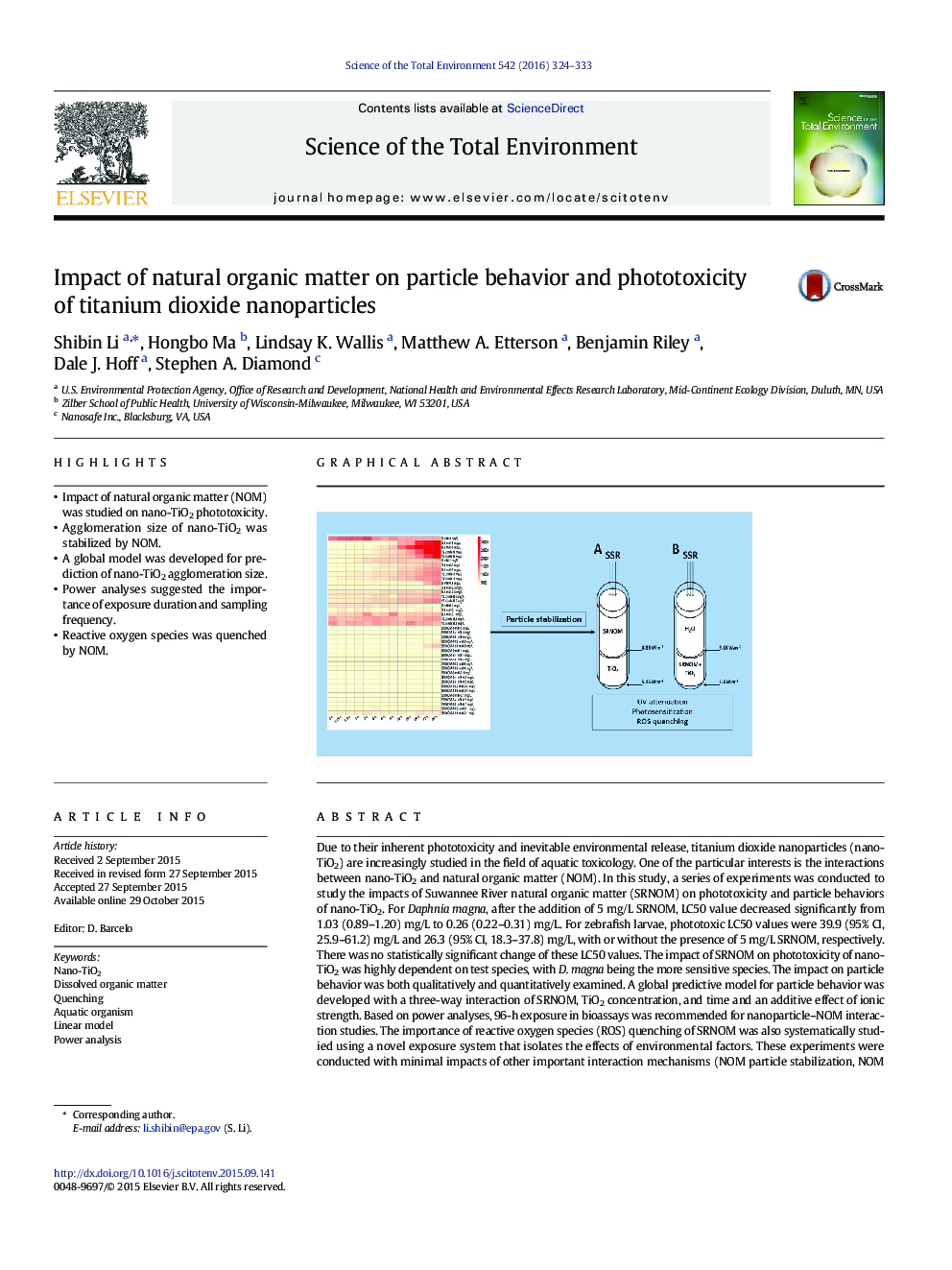| کد مقاله | کد نشریه | سال انتشار | مقاله انگلیسی | نسخه تمام متن |
|---|---|---|---|---|
| 6324782 | 1619742 | 2016 | 10 صفحه PDF | دانلود رایگان |
- Impact of natural organic matter (NOM) was studied on nano-TiO2 phototoxicity.
- Agglomeration size of nano-TiO2 was stabilized by NOM.
- A global model was developed for prediction of nano-TiO2 agglomeration size.
- Power analyses suggested the importance of exposure duration and sampling frequency.
- Reactive oxygen species was quenched by NOM.
Due to their inherent phototoxicity and inevitable environmental release, titanium dioxide nanoparticles (nano-TiO2) are increasingly studied in the field of aquatic toxicology. One of the particular interests is the interactions between nano-TiO2 and natural organic matter (NOM). In this study, a series of experiments was conducted to study the impacts of Suwannee River natural organic matter (SRNOM) on phototoxicity and particle behaviors of nano-TiO2. For Daphnia magna, after the addition of 5Â mg/L SRNOM, LC50 value decreased significantly from 1.03 (0.89-1.20) mg/L to 0.26 (0.22-0.31) mg/L. For zebrafish larvae, phototoxic LC50 values were 39.9 (95% CI, 25.9-61.2) mg/L and 26.3 (95% CI, 18.3-37.8) mg/L, with or without the presence of 5Â mg/L SRNOM, respectively. There was no statistically significant change of these LC50 values. The impact of SRNOM on phototoxicity of nano-TiO2 was highly dependent on test species, with D. magna being the more sensitive species. The impact on particle behavior was both qualitatively and quantitatively examined. A global predictive model for particle behavior was developed with a three-way interaction of SRNOM, TiO2 concentration, and time and an additive effect of ionic strength. Based on power analyses, 96-h exposure in bioassays was recommended for nanoparticle-NOM interaction studies. The importance of reactive oxygen species (ROS) quenching of SRNOM was also systematically studied using a novel exposure system that isolates the effects of environmental factors. These experiments were conducted with minimal impacts of other important interaction mechanisms (NOM particle stabilization, NOM UV attenuation, and NOM photosensitization). This study highlighted both the particle stabilization and ROS quenching effects of NOM on nano-TiO2 in an aquatic system. There is an urgent need for representative test materials, together with key environmental factors, for future risk assessment and regulations of nanomaterials.
209
Journal: Science of The Total Environment - Volume 542, Part A, 15 January 2016, Pages 324-333
